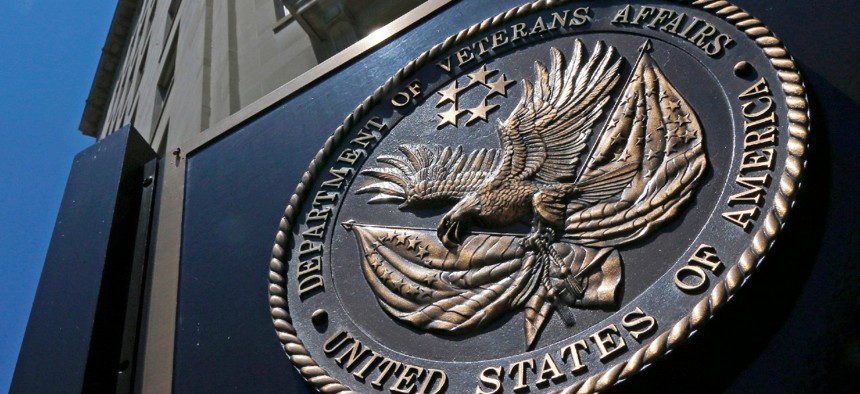
Charles Dharapak / AP file photo
VA Touts Lower Employee COVID-19 Infection Rates, Improved PPE Supply
Officials praise VA workforce's resiliency as widespread vaccination leads to far fewer employees missing work.
Despite widespread fears and complaints of inadequate protection among Veterans Affairs Department workers, agency leaders told lawmakers on Friday they have seen signs of unprecedented engagement as VA tackles the COVID-19 pandemic.
Retirements over the last year were down compared to the previous year, said Richard Stone, who leads the Veterans Health Administration, in testimony before the House Appropriations Committee's VA panel, and vacation is at “historic low rates.” VA’s success in vaccinating workers has also dramatically shrunk the number of employees unable to work due the pandemic, Stone said, down from a peak of 6,000 staff per day to 1,300. Stone praised the “aggressive plan” VA has implemented to inoculate its workforce, noting some facilities are more than 90% vaccinated. All told, the department has provided vaccines to 275,000 employees.
VA has also used the crisis of the pandemic to shore up its rolls, as it has started to address longstanding vacancies throughout its health care network. The department has brought on 80,000 new employees since the COVID-19 outbreak began, thanks to billions in funding provided through the Coronavirus Aid, Relief, and Economic Security Act and hiring flexibilities provided by the Office of Personnel Management. Stone said the “vast majority” of VA’s current hiring is now completed within three days.
He repeatedly praised his workforce for its commitment and dedication to the mission, noting employees have volunteered to sleep in their hospitals for several consecutive nights during recent winter storms to “make sure they can get here to care for veterans at their bedside.” He particularly commended VA workers for maintaining their duties in light of personal difficulties, such as the mental health toll of their efforts and dealing with children out of school.
“This has been tough,” Stone said. “Everybody’s life has been turned upside down.”
He noted that every asset related to mental health care for veterans has been similarly made available to the workforce.
While VA remains in a “contingency strategy” with its allocation of N95 masks and gloves, Stone defended the department’s approach. He conceded N95s are only given to employees directly in contact with people with COVID-19 or involved in aerosolized procedures, but said it has a 180-day supply of all personal protective equipment except for gloves, of which it has a 103-day supply. He cited Centers for Disease Control and Prevention statistics that show about 11% of health care workers nationally have contracted COVID-19, compared to less than 5% of VA workers.
The department has made strides in improving the availability of leave and PPE for its workforce since the pandemic’s outset, when even basic surgical masks were hard to come by for staff. Early in the crisis, employees complained of sweating through their weekly mask each day and facing discipline if they refused to come to work after a known exposure to the novel coronavirus. VA has lost 120 employees to COVID-19.
Several lawmakers questioned why VA requires another $13.5 billion in emergency funding as the Biden administration has requested, despite the significant funds it already received in the CARES Act. Stone explained the money would go toward maintaining the increased staffing levels and other pandemic activities such as PPE requirements and mobile intensive care units. He added high unemployment means more veterans will turn to VA for health care after they lose their jobs, deferred and delayed care will start to ramp up and long-neglected systems will be modernized. The funding would also allow VA to prepare for future pandemics, Stone said.







